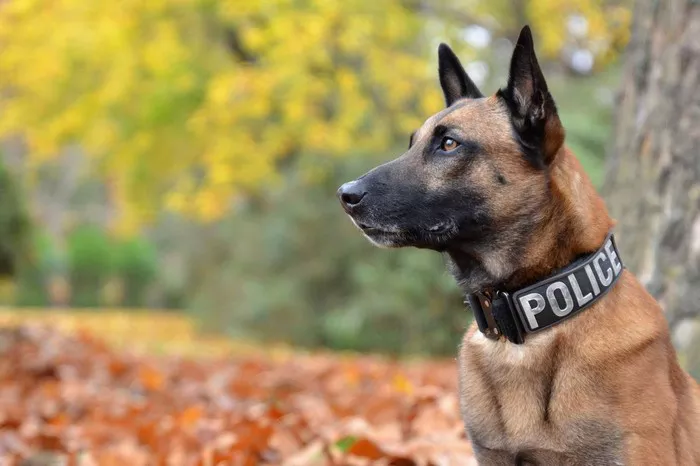Belgian Malinois dogs are known for their loyalty, intelligence, and strong bond with their owners. If your Malinois shadows you relentlessly—whether you’re cooking, working, or even using the bathroom—you’re not alone. This behavior is deeply rooted in their genetics, upbringing, and emotional needs. This article explores the reasons behind this “velcro dog” trait, its implications, and how to manage it effectively.
The Nature of the Belgian Malinois
Breed History and Instincts
The Belgian Malinois was originally bred in Belgium as a herding and guarding dog. Their role required constant communication with handlers and vigilance over livestock. Over generations, this translated into a natural inclination to stay close to their human “leader.”
Key Traits
Working Drive: Malinois are bred to work alongside humans, making them hyper-attuned to their owner’s movements.
Protective Instincts: They monitor their environment for threats, often staying near their owner to guard them.
High Intelligence: Their problem-solving skills drive them to observe and mimic human behavior.
Common Reasons Your Malinois Follows You
Bonding and Attachment
Malinois form intense emotional bonds with their primary caregiver. A 2022 study in Applied Animal Behaviour Science found that working breeds like Malinois show higher levels of attachment-related behaviors compared to companion breeds.
Examples:
- Following you from room to room.
- Resting at your feet while you work.
Herding Instincts
Their herding ancestry compels them to “keep the flock together.” Even in homes without livestock, this instinct manifests as following or gently nudging family members.
Case Study:
A Malinois named Rex would circle his owner during walks, mimicking herding behavior.
Seeking Stimulation
Malinois crave mental and physical engagement. If under-exercised, they may follow you out of boredom, hoping for play or tasks.
Anxiety or Insecurity
Separation anxiety is common in Malinois. A dog that panics when left alone might shadow you to prevent isolation. Signs include whining, pacing, or destructive behavior when you leave.
Reinforcement Through Training
If you’ve rewarded your Malinois for staying close (e.g., treats during heel training), they may generalize this behavior to all situations.
Health Concerns
Rarely, excessive following can signal medical issues like vision loss, cognitive decline, or pain. Rule out health problems with a vet visit.
When Following Becomes a Problem
While companionship is natural, problematic following includes:
Obsessive Shadowing: The dog panics or becomes aggressive if separated.
Ignoring Basic Needs: Refusing to eat, drink, or rest unless you’re present.
Disruptive Behavior: Blocking doorways or barking to prevent you from leaving.
How to Manage Excessive Following
Build Independence Gradually
Step 1: Teach a “stay” command.
- Ask your dog to stay in one room while you move to another.
- Reward calm behavior with treats or praise.
Step 2: Use puzzle toys or long-lasting chews (e.g., frozen Kongs) to distract them when you’re busy.
Address Separation Anxiety
Desensitization:
- Practice short departures (1–5 minutes) and gradually increase duration.
- Avoid emotional farewells; keep arrivals and departures low-key.
Safe Spaces: Create a cozy area (crate or bed) where your dog feels secure alone.
Fulfill Exercise and Mental Needs
Daily Routine: 1–2 hours of intense exercise (running, agility) + 30 minutes of mental work (scent games, obedience drills).
Job Assignments: Assign tasks like carrying a backpack during walks or “guarding” a toy.
Avoid Reinforcing Clinginess
- Ignore attention-seeking behaviors (pawing, nudging).
- Reward calm independence—for example, give treats when your dog relaxes in another room.
Consult a Professional
For severe cases, seek help from a certified dog behaviorist. Medication may be recommended for anxiety (e.g., fluoxetine) in extreme scenarios.
Comparing Belgian Malinois to Other Breeds
German Shepherd
Following Behavior: Also loyal but slightly more independent.
Anxiety Levels: Less prone to separation anxiety than Malinois.
Border Collie
Similarities: High energy and herding instincts.
Differences: Collies may herd children or pets more actively.
Labrador Retriever
Following Tendency: Seeks companionship but less obsessively.
Case Studies
Case 1: Military Malinois with “Overbonding”
A military dog named Ace refused to work with anyone except his primary handler. Trainers resolved this by rotating handlers and rewarding Ace for responding to multiple people.
Case 2: Family Pet with Separation Anxiety
A 3-year-old Malinois, Luna, destroyed furniture when left alone. Her owners implemented crate training and desensitization, reducing destructive episodes by 80% in 6 weeks.
When to Embrace the Behavior
If your Malinois follows you calmly and isn’t distressed by temporary separation, this is normal. Many owners appreciate their dog’s loyalty and vigilance.
Tips for Harmony:
- Set boundaries (e.g., no following into the bathroom).
- Use their attentiveness for training (e.g., off-leash reliability).
Conclusion
A Belgian Malinois that follows you everywhere is expressing deeply ingrained traits: loyalty, vigilance, and a desire to work. While this behavior is natural, excessive clinginess can signal unmet needs or anxiety. By providing structure, exercise, and gradual independence training, you can nurture a balanced relationship.
Related Topics:
WHY ARE BELGIAN MALINOIS SO SPECIAL?
WHAT ARE THE DISADVANTAGES OF A BELGIAN SHEPHERD?
EXPLORING THE FOUR DISTINCT TYPES OF BELGIAN SHEPHERD


